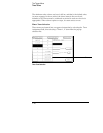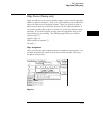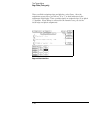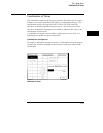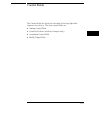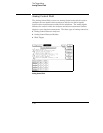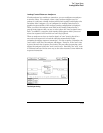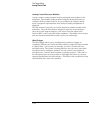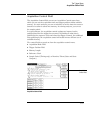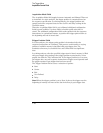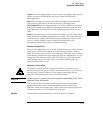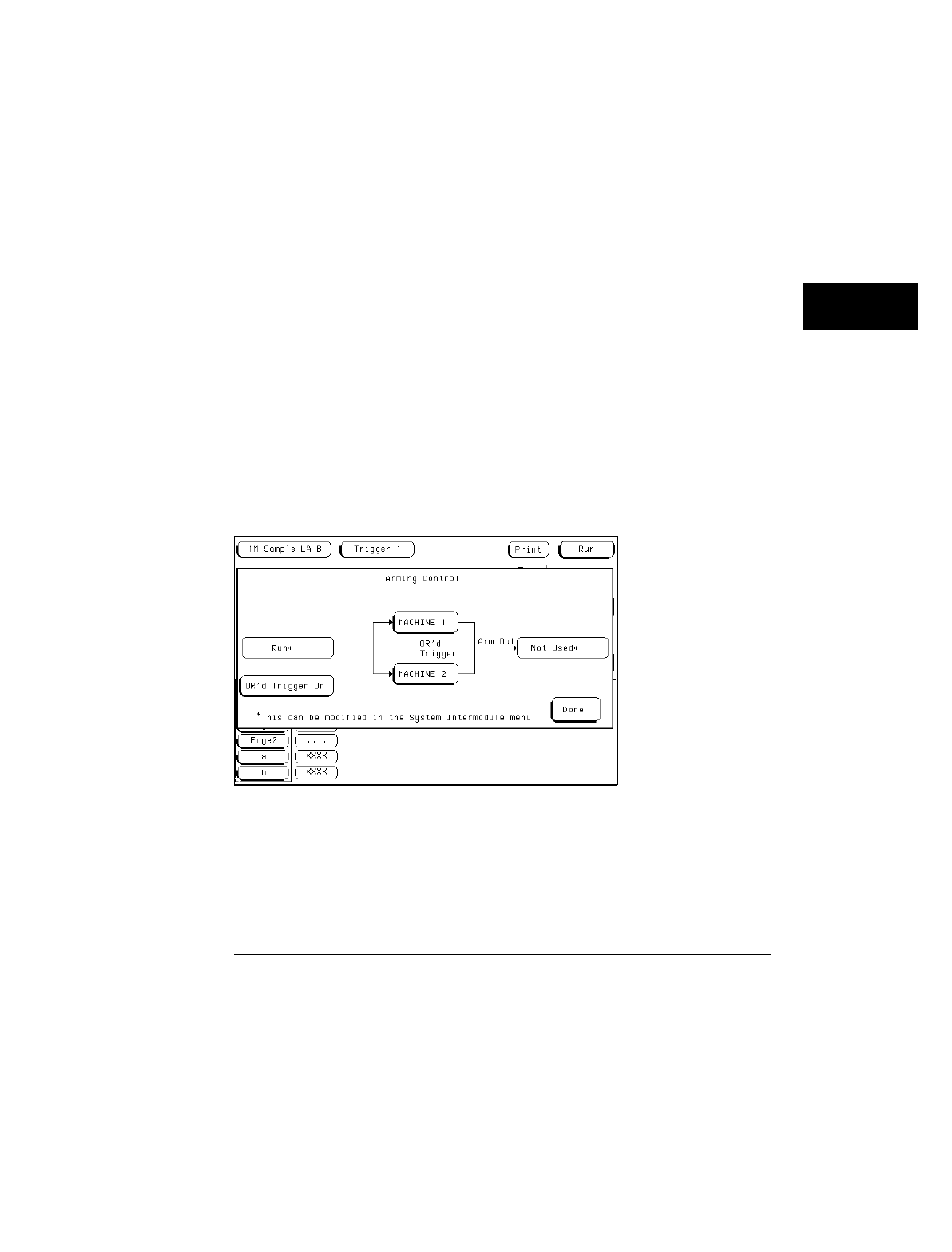
Arming Control Between Analyzers
If both analyzers in a module are turned on, you can configure one analyzer
to arm the other. For example, when a state analyzer triggers on a bit
pattern, it could arm a timing analyzer which then captures and displays the
waveform after it triggers. As you configure the Arming Control menu, a
graphical representation of the analyzer arming configuration is displayed.
When you select the analyzer name field in the Arming Control menu, a
pop-up menu appears that you use to select where the Arm In signal comes
from. In addition, a sequence level number field appears which you use to
select the sequence level in which an "arm" flag is placed.
When an analyzer receives an Arm-In signal, an "arm" term is placed in a
user-selected sequence level and the analyzer automatically begins
evaluating its trigger sequence instruction. If in the sequence evaluation, the
"arm" term is seen first, the analyzer will trigger. However, if the "arm" term
is placed down in the sequence level order, the preceding sequencing could
trigger the analyzer before the "arm" term is seen. Generally, the "arm" term
is evaluated and used in the same way as the other resource terms within the
sequence instruction.
Two Analyzer Arming
The Trigger Menu
Arming Control Field
5–33




